Validation of Measurement Procedures that Include Sampling (1st Ed)
- Details
- Published: Wednesday, 18 December 2024 01:45
A supplement to:
“The Fitness for Purpose of Analytical Methods”
“Measurement Uncertainty arising from Sampling”
 Guidance is given on how to validate a measuring procedure that includes the primary sampling (VaMPIS). It is a supplement to existing Eurachem guidance on “The Fitness for Purpose of Analytical Methods” and “Measurement Uncertainty arising from Sampling”. The overall aim is to extend the concept of ‘validation of a measurement procedure’ beyond the validation of the analytical method (or procedure) alone, in order to include the primary sampling (and physical sample preparation) within the validation process.
Guidance is given on how to validate a measuring procedure that includes the primary sampling (VaMPIS). It is a supplement to existing Eurachem guidance on “The Fitness for Purpose of Analytical Methods” and “Measurement Uncertainty arising from Sampling”. The overall aim is to extend the concept of ‘validation of a measurement procedure’ beyond the validation of the analytical method (or procedure) alone, in order to include the primary sampling (and physical sample preparation) within the validation process.
Ideally, VaMPIS can be applied to validate the whole measurement procedure simultaneously. Alternatively, VaMPIS can be applied sequentially by using an analytical procedure that has already been validated for this purpose in isolation, but then extending it to include the sampling step.
The key characteristic that enables validation of both the sampling and the analytical procedures is the measurement uncertainty, when supported by the performance characteristics that apply to the analytical procedure, which are already described in the Fitness for Purpose guide.
Two worked examples are provided to demonstrate how VaMPIS can be applied to both ex situ analysis in a laboratory of an extracted sample, and also to in situ analysis made ‘in the field’, without extracting a physical sample. Guidance is also given on the management and QC issues that are needed in order to integrate the sampling and the analytical steps, which have previously usually not had a unified and coordinated approach to data quality.
Availability
This supplementary guidance is available in the following languages:
- Download the guide in English (published 2024-12-17) (pdf, 1.8 Mb).
Citation
This publication should be cited* as:
M. H. Ramsey, P. D. Rostron, F. C. Raposo (eds.) Eurachem/EUROLAB/CITAC/Nordtest/AMC Guide: "Validation of Measurement Procedures that Include Sampling", Eurachem (2024). Available from http://www.eurachem.org"
*Subject to journal requirements
Translations
Translation into other languages is permitted for members of Eurachem. Other offers of translation should be directed to the Eurachem Secretariat for permission. The Eurachem policy on maintenance and development of Eurachem guidance, available on the Policies page, gives further information on translation.


 A wide variety of analytical equipment is used in analytical laboratories, ranging from simple apparatus to complex computer-based systems, to collect data that helps to obtain a reportable result. Many of these pieces of equipment combine a measurement function with software control. There are many ways to demonstrate that an equipment is qualified and under control, including qualification, calibration, validation and maintenance. To ensure ‘fitness for purpose’, an integrated approach based on risk assessment is recommended.
A wide variety of analytical equipment is used in analytical laboratories, ranging from simple apparatus to complex computer-based systems, to collect data that helps to obtain a reportable result. Many of these pieces of equipment combine a measurement function with software control. There are many ways to demonstrate that an equipment is qualified and under control, including qualification, calibration, validation and maintenance. To ensure ‘fitness for purpose’, an integrated approach based on risk assessment is recommended.
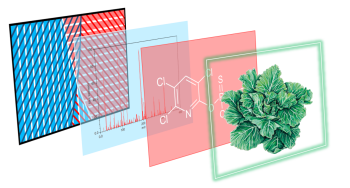 Many decisions with socio-economic or individual impact depend on qualitative analysis, including decisions related to food safety, clinical diagnosis, and forensic evidence, are based primarily on qualitative, rather than quantitative, chemical analysis. Qualitative analysis is analysis that returns a classification rather than a numerical value, such as the identity of a chemical substance, the type of plastic of a microparticle, the potential source of an oil spill, the presence of a banned sports doping substance, or the presence of accelerant in fire debris. Sometimes, such classifications rely solely on qualitative tests; others may use measurement results (such as line frequencies in a spectrum) to reach a conclusion.
Many decisions with socio-economic or individual impact depend on qualitative analysis, including decisions related to food safety, clinical diagnosis, and forensic evidence, are based primarily on qualitative, rather than quantitative, chemical analysis. Qualitative analysis is analysis that returns a classification rather than a numerical value, such as the identity of a chemical substance, the type of plastic of a microparticle, the potential source of an oil spill, the presence of a banned sports doping substance, or the presence of accelerant in fire debris. Sometimes, such classifications rely solely on qualitative tests; others may use measurement results (such as line frequencies in a spectrum) to reach a conclusion.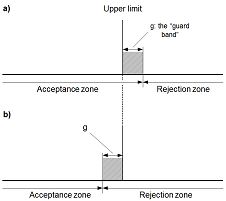 In order to decide whether a result indicates compliance or non-compliance with a specification, it is necessary to take into account the measurement uncertainty associated with the result. This guide provides guidance on how uncertainty may be taken into account in deciding compliance with a limit.
In order to decide whether a result indicates compliance or non-compliance with a specification, it is necessary to take into account the measurement uncertainty associated with the result. This guide provides guidance on how uncertainty may be taken into account in deciding compliance with a limit.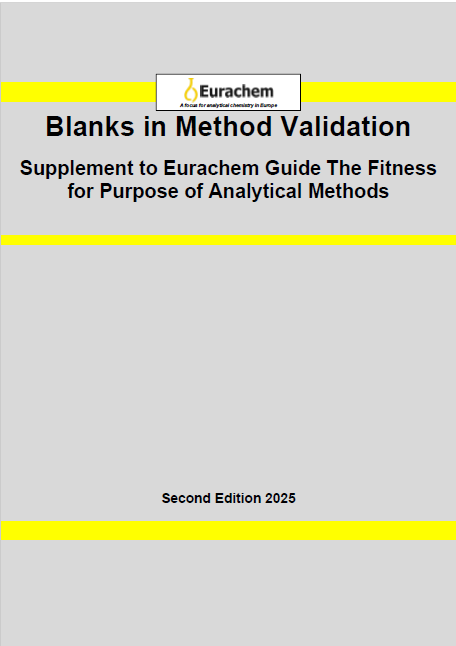 Blanks are an important tool and are used in the determination of most performance characteristics during a validation process. They are also often included in each analytical run during routine use of the measurement procedure. There are many different types of blanks and the analyst must consider which blanks to include during preparation of the validation plan.
Blanks are an important tool and are used in the determination of most performance characteristics during a validation process. They are also often included in each analytical run during routine use of the measurement procedure. There are many different types of blanks and the analyst must consider which blanks to include during preparation of the validation plan.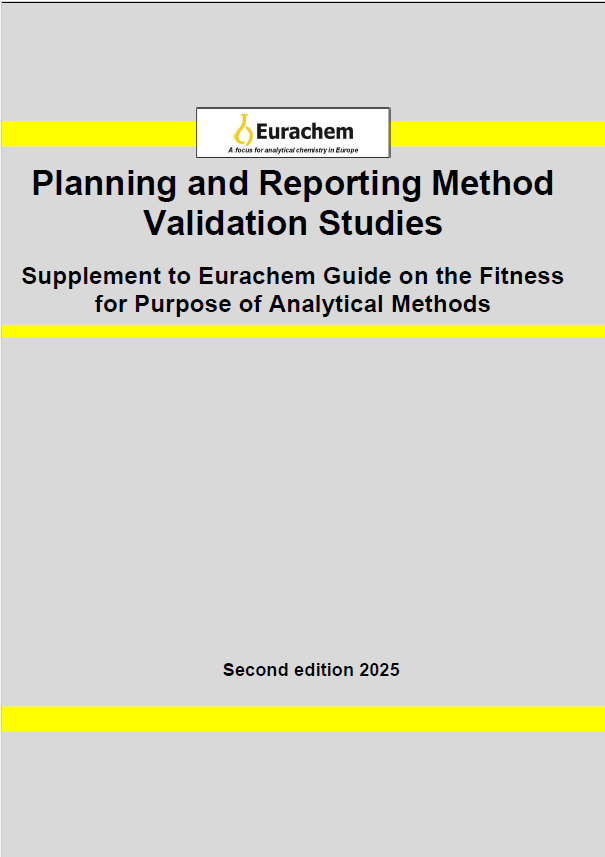 Planning is an essential stage in the validation process. Before starting any experimental work, the aim should be to have a clear plan for the entire validation study. This should cover the performance characteristics that will be studied, the target value for each performance characteristic, the materials that will be analysed, the level of replication and order of the experiments, any statistical analysis that will be used, and how the method will be judged as being fit for purpose.
Planning is an essential stage in the validation process. Before starting any experimental work, the aim should be to have a clear plan for the entire validation study. This should cover the performance characteristics that will be studied, the target value for each performance characteristic, the materials that will be analysed, the level of replication and order of the experiments, any statistical analysis that will be used, and how the method will be judged as being fit for purpose.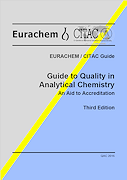 The aim of this guide is to provide laboratories with guidance on best practice for the analytical operations they carry out. The guidance covers both qualitative and quantitative analysis carried out on a routine or non-routine basis. A separate guide covers research and development work (
The aim of this guide is to provide laboratories with guidance on best practice for the analytical operations they carry out. The guidance covers both qualitative and quantitative analysis carried out on a routine or non-routine basis. A separate guide covers research and development work (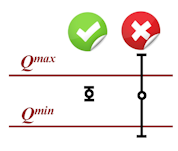 This guideline is applicable to analytical fields where the target uncertainty is not set by the regulator or the client, or where a minimum difference of the studied parameter in the same or different items must be detected in R&D work. This guide discusses how to set the target uncertainty for process development and for applied or fundamental research using information about the smallest difference or system trend that must be distinguished in a reliable way.
This guideline is applicable to analytical fields where the target uncertainty is not set by the regulator or the client, or where a minimum difference of the studied parameter in the same or different items must be detected in R&D work. This guide discusses how to set the target uncertainty for process development and for applied or fundamental research using information about the smallest difference or system trend that must be distinguished in a reliable way.